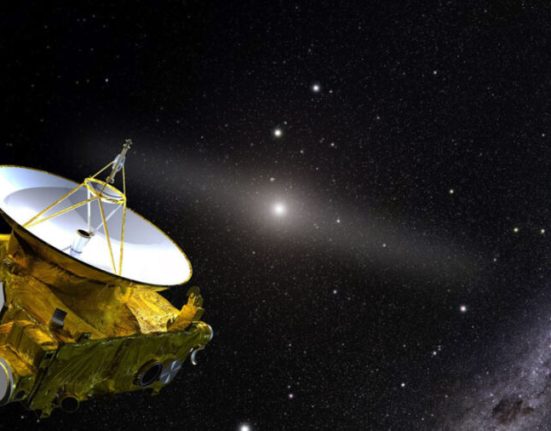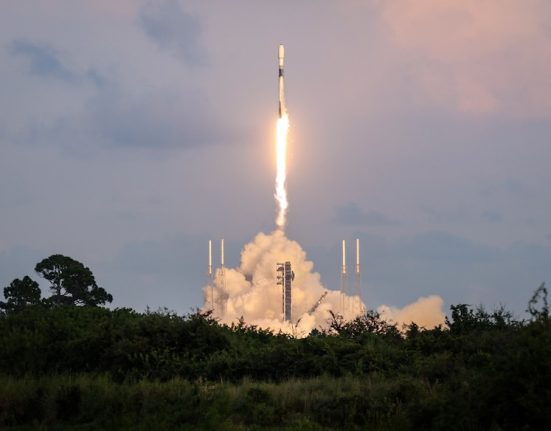Venus is often called Earth's sister planet because of their shared physical, geological, and atmospheric characteristics. Scientists have discovered something new about Venus' geology that reminds us of the similarities between the two planets. We need to look deeper at both planets to see what researchers have discovered.
There are a few reasons why this pair of planets are sometimes called twins. They have several characteristics in common:
- They are neighbors of the inner Solar System.
- They are both rocky.
- They are approximately the same size and mass.
- Both have few craters, implying young surfaces.
- Both have dense atmospheres and clouds.
- Both have geological similarities and surface features such as volcanoes, mountains, plateaus and plains.
New research published in Nature Geoscience focuses on the last item on that list. Its title is “Ishtar Terra highlands on Venus uplifted by craton-like formation mechanisms.”The lead author is Fabio Capitanio, Associate Professor at the School of Earth, Atmosphere and Environment at Monash University.
Ishtar Terra is one of the three major mountainous regions of Venus. Its topography includes mountains, plains, and plateaus. Maxwell Montes The mountain range is in Ishtar Terra and is about 11 kilometres (6.8 mi) high, compared to Mount Everest, which is 8.8 kilometres (5.5 mi).
Ishtar Land features very complex terrain and appears to be highly deformed, indicating that Venus underwent intense geological activity in the past.

Ishtar Terra also contains Lakshmi Planum, a two million square kilometer plateau about four kilometers high and surrounded by extremely deformed terrain. It is formed by gentle lava flows and features two large shield volcanoes. Colette Patera is about 130 kilometers in diameter and Sacajawea Patera is about 200 kilometers wide and between 1 and 2 kilometers deep. Although Venus is tectonically inactive today, scientists believe that ancient tectonic activity is responsible for the region's wild topography.

New research published in Nature Geoscience focuses on a specific part of geology called cratons. Cratons are the ancient geological cores of Earth's continents. They are stable parts of Earth's lithosphere that are typically found at the center of the planet's continental plates. Cratons have survived Earth's extensive history of continental breakup and melting. They are typically composed of extremely durable materials. Basement rock and have deep roots that can extend several hundred kilometers into the planet's mantle.
Some cratons date back to the Precambrian era, more than 2.5 billion years ago. Others may be even older and could date back to the early days of the Earth during the Hadean and Archaic Eons.
In this new work, Capitanio and his co-investigators used data from NASA's Magellan spacecraft and high-performance computer simulations to further investigate the formation of Ishtar Terra. They found that Ishtar Terra may have formed in the same way as cratons on Earth.
“The structures emerging in this model provide topography, gravity, and crustal thickness remarkably comparable to the plateaus of Venus.”
From “The Ishtar Terra Highlands on Venus, Uplifted by Craton-Like Formation Mechanisms.”
On Earth, plateaus and mountain belts like Ishtar Terra would clearly be the result of continental plate collisions. Ishtar Terra is similar to the Tibetan Plateau, and continental collision is the main driver of its formation. Something else must be behind Ishtar Terra and the other Venusian lands because the planet lacks plate tectonics. But Ishtar Terra shares something particular with Earth: it has a thick crustal floor similar to Earth's cratons.
This suggests that the planets have or had processes in common. Ishtar Land and the other Venusian lands may have arisen from the planet's hot interior. While there are several competing explanations for the formation of Earth's cratons, one is the molten plume model. It claims that rising plumes of molten rock rose from deep within Earth's mantle and formed thick layers with the cratons above them.
“The study challenges our understanding of how planets evolve,” said lead author Capitanio. “We did not expect Venus, with its scorching surface temperature of 460°C and lack of plate tectonics, to have such complex geological features.”
Although Venus does not have plate tectonics, it does have a hot lithosphere. The planet's surface temperature is about 460 °C (860 °F). The heat spreads into the lithosphere, which is hotter than Earth's due to Venus's runaway greenhouse effect. The surface simply cannot dissipate the heat the way Earth can. The high heat means that Venus' lithosphere is probably thinner than Earth's. While Earth's lithosphere may be up to 200 km thick, perhaps even more, Venus's is only about 50–100 km thick. Because it is so much thinner, it is also weaker.
“Venus’ hot lithosphere could make it a good analogue of early Earth and allow for the same types of continent-building processes that occurred on Earth,” the researchers write in a report in Nature. “We focused on Ishtar Terra, the broadest of the plateaus, for which we found that topography, crustal thickness, and gravity signals are consistent with our simulations when the modeled lithosphere is roughly 10 to 50 times weaker than Earth’s.”

“Venus,” the researchers explain. Image credit: Capitiano et al. 2024.
The thin lithosphere favors “the emplacement of a thick magmatic crust above a deep residual layer.”
“impoverished mantle,” the authors write in their research.
“This discovery offers a fascinating new perspective on Venus and its possible links to early Earth,” Capitanio said. “The features we found on Venus are surprisingly similar to Earth’s early continents, suggesting that Venus’s past dynamics may have been more similar to Earth’s than previously thought.”
The research shows that despite their differences, divergent rocky planets can share underlying mechanisms. Detecting these cratons or mechanisms associated with them on another planet can help scientists understand Earth. “By studying similar features on Venus, we hope to unlock the secrets of Earth’s early history,” said Associate Professor Capitanio.
Venus is like the Solar System's Plan B. If life couldn't work on Earth, maybe it could have worked on Venus. There is evidence that Venus may have had liquid water and used to be in the habitable zone, although it's not certain. In any case, while Earth is abuzz with life, Venus is too hot.
Earth's ancient cratons are part of Earth's history. On our planet, geology, life, and atmosphere are intimately connected. By recognizing what Earth and Venus have in common and how they differ, researchers can learn more about Earth's path to a living planet.
Future missions to Venus are in the works, and should provide even more explanations for the divergent results from the sister planets.
“Our research has paved the way for future missions to Venus, such as DAVINCI, VERITAS and EnVision,” said Capitanio. “These missions will provide more information about the geological history of Venus and its connection to Earth.”













Leave feedback about this